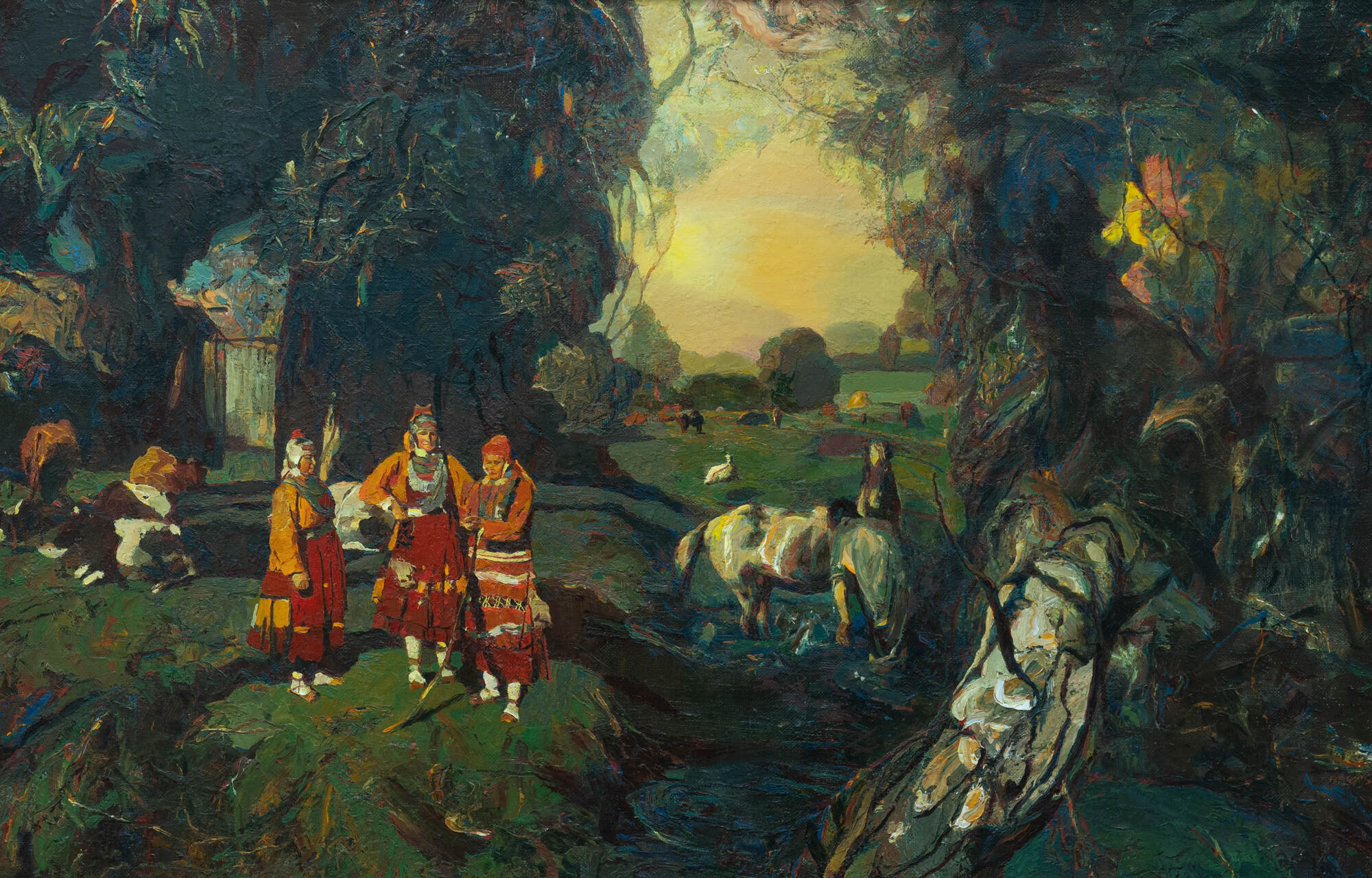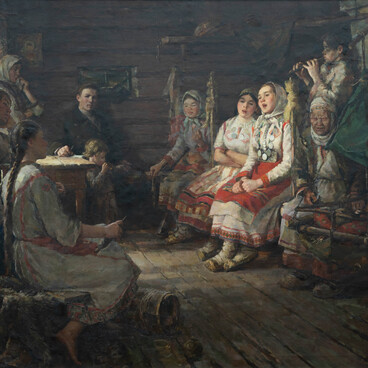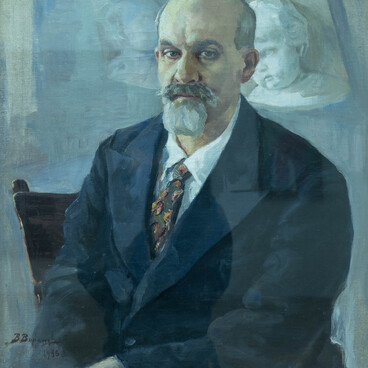Vladimir Ivanovich Ageyev contributed greatly to the development of Chuvash art. Vladimir Ageyev was born in 1932. He graduated from the Cheboksary Art College in 1956. He worked as an illustrator for the Chuvash publishing company and was also employed at a satirical magazine called “Kapkan”. In 1993, he became one of the founding members of the Chuvashia Artist’s Union — an art organization that aims at developing the national theme in art, as well as preserving, strengthening, and promoting the cultural legacy of the Chuvash people.
The artist had a penchant for both painting and graphics. His main theme is Chuvash folklore, ancient ideas, and mythology. Ageyev’s unique and deeply individual style has easily recognizable traits: his canvases seem to be woven from strokes of color, which, when viewed at a distance, create a complete, richly colored picture.
The presented work, like most of the artist’s paintings, is characterized by an excessively detailed foreground, where the figures of characters merge with a bunch of trees; despite contradicting the plot, it is imbued with intense inner dynamics. The painter skillfully uses the play of light and color and manages to create a sense of movement in the background. The only part of the painting that seems to be at peace amid this vibrant scene is a small area of the rosy sky.
Ageyev builds this peculiar “Chuvash” coloring on actively contrasting warm red and ocher-greenish hues. The landscape is flooded with warm evening light. Cows appear to be resting after the hot day, and a light-colored horse drinks standing knee-deep in water, but all the attention is focused on three women wearing national clothes. The Chuvash national headdresses called khushpu and pectoral ornaments, embroidered with silver, gleam in the light; the bright white strips of lace stand out against the red colorful dresses and aprons. The women’s postures are static, their eyes seem to be downcast. They are together but at the same time still apart: all of them are focused on the lyrics of an old folk song and yet each one of them experiences it in her own way.
The artist had a penchant for both painting and graphics. His main theme is Chuvash folklore, ancient ideas, and mythology. Ageyev’s unique and deeply individual style has easily recognizable traits: his canvases seem to be woven from strokes of color, which, when viewed at a distance, create a complete, richly colored picture.
The presented work, like most of the artist’s paintings, is characterized by an excessively detailed foreground, where the figures of characters merge with a bunch of trees; despite contradicting the plot, it is imbued with intense inner dynamics. The painter skillfully uses the play of light and color and manages to create a sense of movement in the background. The only part of the painting that seems to be at peace amid this vibrant scene is a small area of the rosy sky.
Ageyev builds this peculiar “Chuvash” coloring on actively contrasting warm red and ocher-greenish hues. The landscape is flooded with warm evening light. Cows appear to be resting after the hot day, and a light-colored horse drinks standing knee-deep in water, but all the attention is focused on three women wearing national clothes. The Chuvash national headdresses called khushpu and pectoral ornaments, embroidered with silver, gleam in the light; the bright white strips of lace stand out against the red colorful dresses and aprons. The women’s postures are static, their eyes seem to be downcast. They are together but at the same time still apart: all of them are focused on the lyrics of an old folk song and yet each one of them experiences it in her own way.



